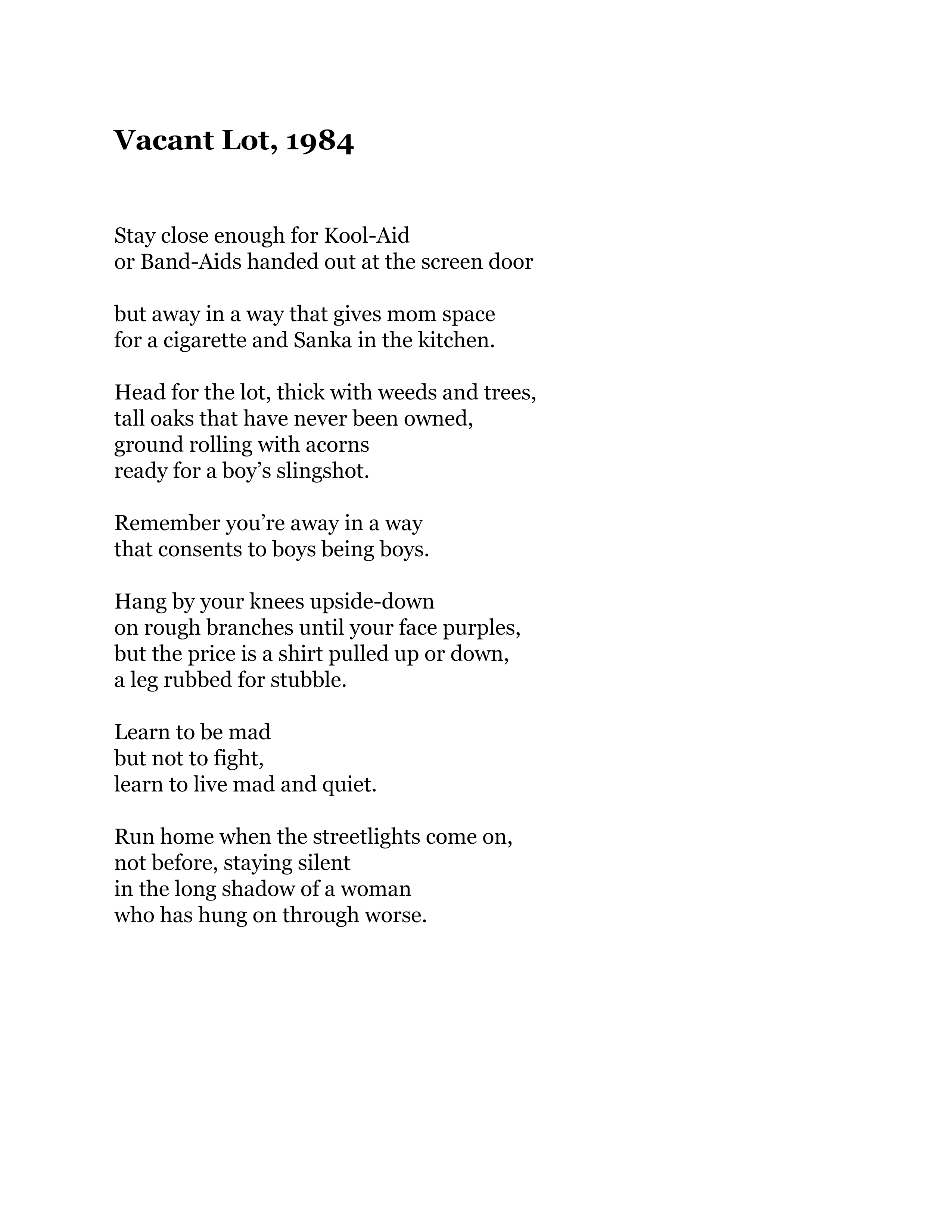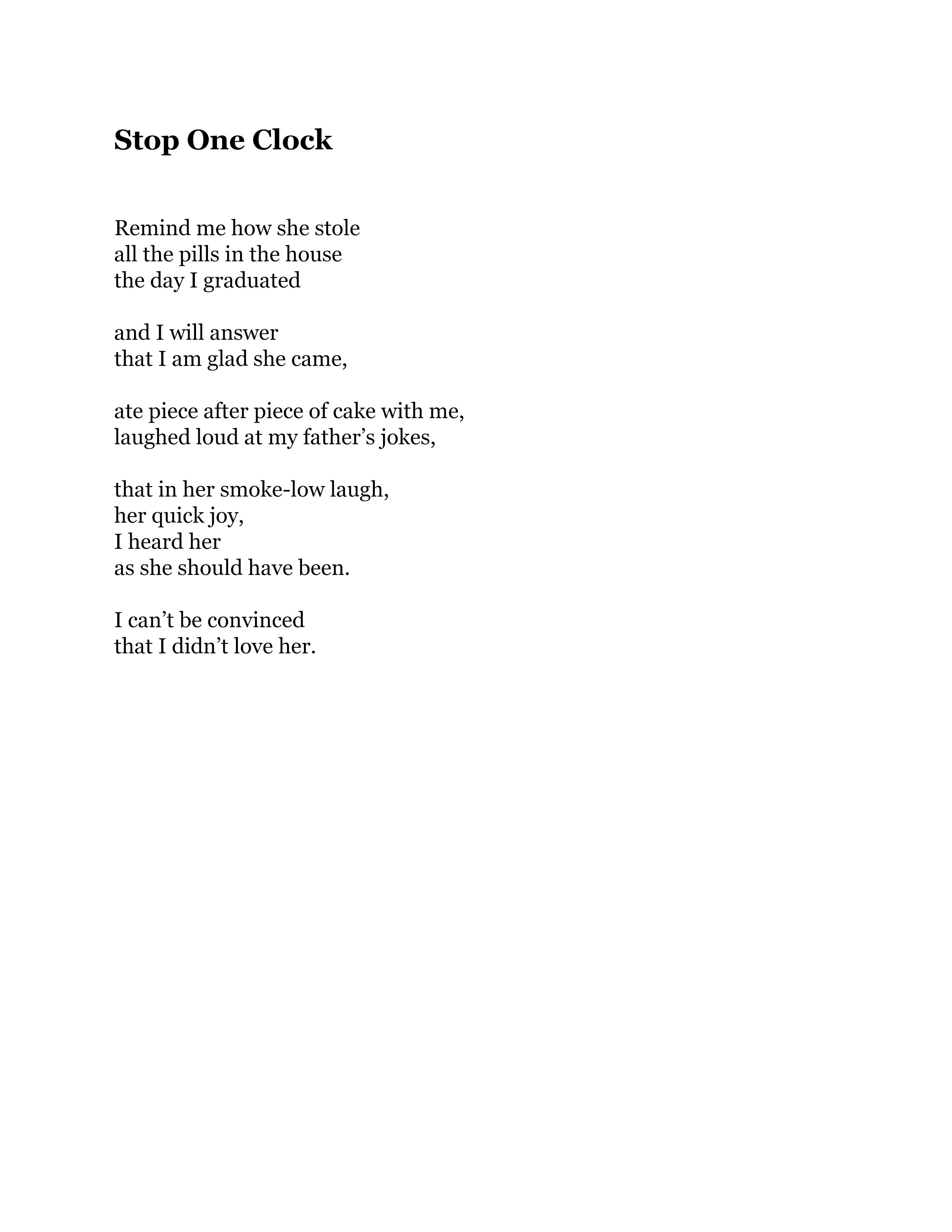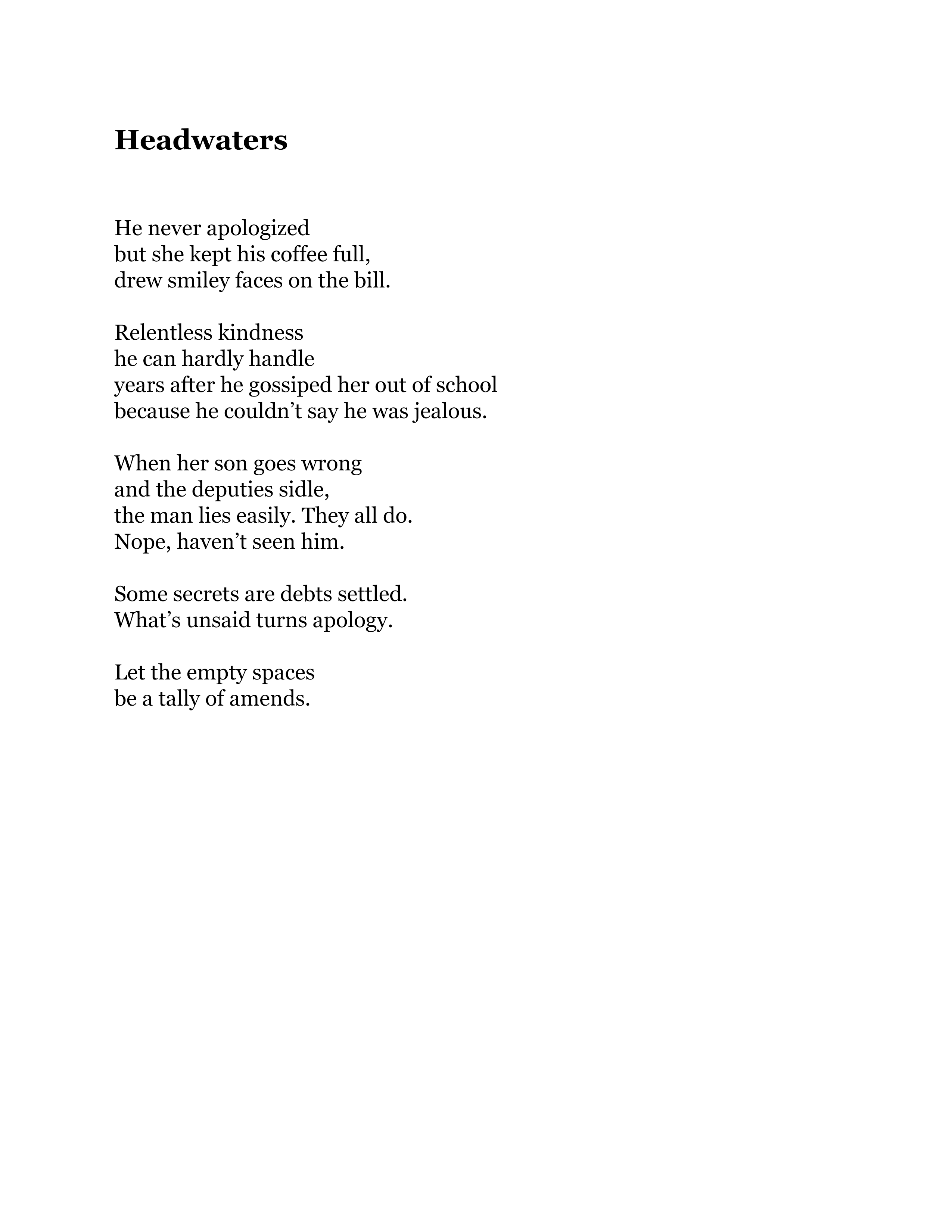3 poems by Jessica L. Walsh
1 essay by Julie Babcock, on the poems of Jessica L. Walsh
Five (Un)quietings
In “Vacant Lot, 1984” a young girl navigates her troubled home life by leaving the house often to hang out at a nearby vacant lot. What happens in the home and in the unsupervised lot is not explicitly stated, though the shadows of violence lurk long in the background. I find myself compelled by the choices of what is concealed and what is revealed in these poems. “Learn to be mad/ but not to fight,/ learn to live mad and quiet,” the poet writes, and I am in awe of the way this lesson learned through trauma is being confronted and actively unlearned in these poems.
*These poems give me a needed opportunity to think through quietness and unquietness. The hard, unrelenting work women must do to navigate a violent world without support, work that stretches beyond one year, or even one generation, into lifetimes.
* So much is about hanging on. The literal image of hanging upside down on “rough branches until your face purples.” The woman “who has hung on through worse.”
* The use of “you” to distance, to create a witness, to create a boundary between what was learned to survive and the refusal of that lesson now.
* Time. There’s 1984. There’s graduation day and one stopped clock. There’s the 41 years since the vacant lot. There’s the making of a new mother and a son old enough to be wanted by the police. These poems travel through time at the speed of light. Nothing and everything is just now.
* Change. These poems determine themselves through a violent world and find love. They hear apologies that are never spoken out loud and yet are as real as a bill on a diner table complete with a hand drawn smiley face. The first line of “Headwaters”: “He never apologized” later followed by the assertion: “What’s unsaid turns apology.”
I am so grateful for these clear, unshakeable poems. They give us time to sift through the gendered connotations of quiet and unquietness and to witness one writer transform them on their own terms. These poems turn quiet-as-silencing towards a quiet-as-acceptance. They transform unquieting from its connotations of unstable disturbance into an unquiet that confronts and creates.



